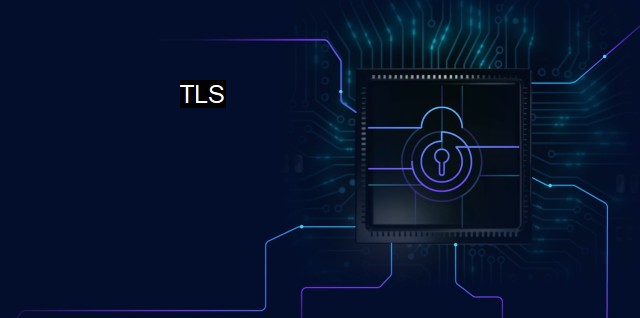What is TLS?
The Importance of TLS in Cybersecurity and Antivirus: Understanding Transport Layer Security Technology
Transport Layer Security, commonly known as TLS, finds wide usage in the realm of cybersecurity. It works as a baseline protocol for data encryption during internet communication to keep data safe from fraudulent activities. The process of encryption ensures that the data is scrambled and unreadable to anyone except for the intended recipient which is integral when sensitive data, such as financial details or personal identification, is being exchanged. Originating from the Secure Sockets Layer (SSL) protocol created by Netscape, the prime objective of TLS is to provide a high level of security and privacy during data exchanges over the internet.Functioning as a successor protocol to SSL, TLS provides enhanced privacy and data integrity between two communicating computer applications. It works at a lower sublayer of some existing application protocols like HTTP, thereby enabling the escalation of these protocols to HTTPS. Besides HTTP, TLS can also be utilized for other traffic types, including messages sent via email protocol SMTP and VoIP calls.
Authentication is an essential component of TLS; it allows a website's server and sometimes the client to verify each other's identities. Typically, the server's identity is verified through a mechanism named Public Key Infrastructure (PKI) to establish trustworthiness, whereby certificates are acquired from trusted third-party entities known as Certificate Authorities (CAs). The CAs vouch for the authenticity of the site where encryption happens through a digital certificate containing a cryptographic key that pairs with a public key.
Another key aspect of TLS in the cybersecurity world is its role in preserving data integrity. It implies that data cannot be corrupted or altered during transit without detection. Primarily, it uses algorithms that encrypt the blocks of data by breaking each block into two before securely shuffling their contents. This method is quite effective in warding off cybercrime activities like man-in-the-middle (MITM) attacks, where nefarious parties intercept and possibly change the data exchanged in a session.
The enhanced data security provided by TLS is inherent in its built-in feature to avert eavesdropping during information exchange between the browser and web server or between two servers. This feature safeguards against greatly prevalent threats online including, but not limited to, data interception and data sniffing. In a fundamental sense, these encryptions afford the enterprises an additional layer of security mitigating risk of exposure or compromise of sensitive data via transfer over the internet.
In a world largely characterized by increasingly infiltrative and malignant threats, like viruses and malware, an antivirus often complements the encryption leveraged by the TLS. Antivirus software houses comprehensive signature databases of all known malicious traits that can infect a system, enabling them to even identify and block unknown threats by statistically comparing them to known vulnerabilities.
TLS acts as a pivotal gatekeeper in today's digitally connected world by creating a secure pathway for data exchanges. When combined with antivirus programs, they establish a robust, highly secure electronic environment far capable of fighting off cyber threats than any individual tool could. Its wide range of services - verifying identities, authenticating servers and clients, preventing eavesdropping- intensify the bearing of TLS as an essential tool in every cybersecurity strategy. Given its range of protection and sense of assurance, TLS is positioned as core security infrastructure, averting risks posed by cyber threats to businesses and individuals alike. technology is a continually evolving space, and constant enhancements to stay ahead of potential breaches are pivotal to maintaining the relevance and effectiveness of protocols like TLS.

TLS FAQs
What is TLS and how does it relate to cybersecurity?
TLS stands for Transport Layer Security, and it is a protocol that provides secure and encrypted communication over the internet. It plays an important role in cybersecurity by ensuring that data transmitted between two systems cannot be intercepted, altered or read by unauthorized parties.Why is TLS important for antivirus software?
Antivirus software relies on the integrity of data packets being transmitted over the network, and TLS helps ensure the authenticity and confidentiality of those packets. TLS also provides an additional layer of protection against man-in-the-middle attacks and other types of cyber threats, making it an important component of any antivirus software.What are some common vulnerabilities associated with TLS?
Some common vulnerabilities associated with TLS include weak cipher suites, outdated protocols, and certificate validation issues. These vulnerabilities can be exploited by cybercriminals to intercept or manipulate data, compromise the integrity of communications, or even bypass security controls completely.How can users ensure they are using a secure TLS connection?
Users can ensure they are using a secure TLS connection by checking for a valid SSL certificate, verifying the hostname matches the certificate, and checking the expiration date of the certificate. They can also use tools such as the SSL Server Test to evaluate the quality of the TLS configuration and identify potential vulnerabilities.| | A | | | B | | | C | | | D | | | E | | | F | | | G | | | H | | | I | | | J | | | K | | | L | | | M | |
| | N | | | O | | | P | | | Q | | | R | | | S | | | T | | | U | | | V | | | W | | | X | | | Y | | | Z | |
| | 1 | | | 2 | | | 3 | | | 4 | | | 7 | | | 8 | | |||||||